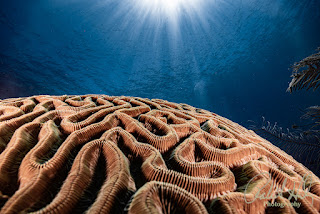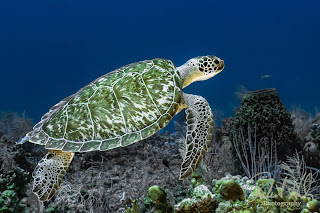Essential Lightroom Tools for Enhancing Bluewater Photography (with AI-Powered Enhancements)
Bluewater photography is an enchanting yet complex pursuit with unique challenges and rewards. Capturing the serene beauty of the underwater world involves an artistic eye and a solid understanding of how to manipulate and enhance images effectively. The interplay of natural light, vibrant colors, and various water conditions, such as haze or backscatter, can transform an ordinary shot into a stunning visual masterpiece.
One of the most effective tools for this enhancement is Adobe Lightroom, which offers a comprehensive suite of features tailored for photographers. Particularly beneficial are its AI-driven capabilities that streamline the editing process, making adjustments more intuitive and impactful.
1. Basic Panel Adjustments
Location: Develop Module > Basic Panel
The Basic Panel is your starting point for almost all photo
edits in Lightroom. Here, you’ll find Exposure, Contrast, Highlights,
Shadows, Whites, and Blacks—the essential tools for
enhancing brightness, contrast, and overall tone.
How to Use: Begin by adjusting Exposure to
correct for underexposure, which is common in underwater shots. Increase Shadows
to reveal details in darker areas like coral or rock formations, and reduce Highlights
to retain soft gradients in water layers. You can also use Lightroom’s AI
auto-adjustment for a quick enhancement tailored to your image’s unique
needs.
Example: In an image of an Eagle Ray gliding over a reef, adjusting Shadows will reveal details in the reef, and the ray, while balancing Highlights, maintains the natural light gradient in the water.
2. White Balance (WB)
Location: Develop Module > Basic Panel
White Balance is essential for underwater shots, where blue
tones often dominate. Adjusting it helps bring warmth and balance back to the
colors. Lightroom’s Auto White Balance powered by AI can give you a
natural starting point.
How to Use: Use the Temp slider to correct
overly cool or warm tones. Slightly increasing Tint can also restore
natural greens, helping balance the image. The Auto WB feature is beneficial, as is using AI to find a natural balance.
Example: For an open-water shot of a diver, use Auto
White Balance to cool down the water’s color, letting the diver’s true colors
shine without oversaturating the scene.
3. HSL/Color Panel
Location: Develop Module > HSL/Color Panel
The HSL (Hue, Saturation, Luminance) panel is your
go-to for tuning specific color channels, particularly the blues and aquas.
Lightroom’s Color Mixer AI can also identify and adjust multiple color
groupings for a more efficient workflow.
How to Use: Boost Saturation in the blue and
aqua channels to make water appear richer and deeper, and adjust Luminance
to control the brightness of specific colors. The Color Mixer AI can identify
dominant colors, which speeds up the process of finding the right balance.
Example: When shooting a reef scene, increase the
blue and aqua saturation for a more vibrant water tone and enhance reds and
oranges to make coral colors pop without affecting the background.
4. Dehaze Tool
Location: Develop Module > Basic Panel
Dehaze reduces backscatter and haziness, which can
obscure details in underwater shots. Lightroom’s AI-powered Dehaze
enhances this tool by intelligently smoothing haze in affected areas.
How to Use: Apply Dehaze gradually to avoid unnatural
dark tones. The AI component can detect the hazy areas and automatically reduce
them, making creating a more precise, vibrant background easier.
Example: For shots with visible backscatter, such as
a diver near a shipwreck, Dehaze helps clarify the scene, enhancing
the subject without losing the natural water texture.
5. Tone Curve
Location: Develop Module > Tone Curve Panel
The Tone Curve offers more control over tonal ranges,
letting you add depth across highlights, midtones, and shadows. AI tools
suggest curve adjustments, creating an optimized tonal balance.
How to Use: Start with a subtle S-curve to increase
contrast, and use AI assistance to avoid over-darkening the shadows. For
underwater shots, slightly lifting the shadows while reducing highlights can
enhance water gradients naturally.
Example: For sun ball shots, AI adjustments in the Tone
Curve can help balance bright areas near the sun while keeping the water column
soft and detailed, preserving the sunburst effect.
6. AI-Powered Masking: Select Sky and Select Subject
Location: Develop Module > Masking Panel
Lightroom’s AI-powered Masking Tools—like Select
Subject and Select Sky—are invaluable for underwater shots. Although
designed for land photography, they’re surprisingly effective underwater, allowing you to mask subjects or backgrounds.
How to Use: Select Subject to isolate specific
subjects, like a fish or diver, and use Refine Edge to soften
transitions with the water background. This keeps the subject sharp and
well-defined against the water.
Example: In a close-up of a brightly colored fish,
use Select Subject to enhance its detail and clarity without altering the
surrounding blue water, which maintains a natural gradient.
AI Blur is another powerful addition to this suite, which allows you to selectively blur the background, creating depth and focus on your subject.
How to Use:
- Select Subject isolates subjects like fish, divers, or corals. You can enhance clarity, sharpness, and colors on the selected area without impacting the background.
- Select Sky can sometimes be used underwater to create a mask for open water, especially in scenes where the water has distinct gradients or lighting changes.
- AI Blur can be applied selectively to areas outside the subject mask to create a natural-looking blur effect, mimicking the softening effect of water over distance.
Example: In a shot of a diver surrounded by a school of fish, use Select Subject to enhance the diver’s clarity, then apply AI Blur to the background to soften the school of fish, making the diver the focal point. This effect emphasizes the subject while keeping the overall image natural and cohesive.
When to Use AI Blur:
- Isolating Subjects in Busy Scenes: Use AI Blur on the background to create separation between the subject and a busy background, like a diver or fish against a reef.
- Emphasizing Depth in Wide Shots: Apply AI Blur to distant elements in wide-angle shots, making nearby subjects pop while maintaining the scene's natural underwater look.
- Enhancing Portraits of Larger Animals: In shots of sharks, turtles, or rays against open water, AI Blur applied to the background adds focus to the animal while subtly enhancing the surrounding water gradient.
Example: For a photo of a sea turtle swimming above a reef, use Select Subject to sharpen and enhance the turtle, then apply AI Blur to the background reef and water. This effect makes the turtle stand out, creating a professional look with a soft-focus background that mimics the actual depth of field underwater.
Using AI Blur along with Select Subject and Select Sky adds an extra layer of control, allowing you to shape the focus and mood of your underwater images while giving them a polished, professional look. It’s particularly useful for scenes where you want to emphasize a single subject or create a natural sense of depth, enhancing your image without losing the soft, immersive feel of the underwater world.
7. Brush Tool for Selective Adjustments
Location: Develop Module > Masking Panel >
Brush Tool
For specific, targeted adjustments, the Brush Tool is ideal.
With AI-assisted masking, you can apply selective edits without spillover into
the background.
How to Use: Paint over areas like the eyes or unique
patterns on a subject to increase sharpness and brightness. The AI Masking Tool
helps refine edges, making selective adjustments smoother and more precise.
Example: For macro shots of a moray eel or sea
turtle, use the Brush Tool to brighten the eyes or accentuate specific textures
without affecting the surrounding water.
8. Detail Panel – Sharpening and Noise Reduction
Location: Develop Module > Detail Panel
High ISO settings in underwater shots often lead to noise,
and AI Noise Reduction helps manage this by smoothing out the grain in
low-light conditions while preserving edge detail.
How to Use: Apply Noise Reduction to the water
background, balancing with Sharpening for texture in the subject. The AI
reduces noise in smooth areas without blurring detailed textures.
Example: AI Noise Reduction maintains a clean water backdrop for images shot in deeper waters, ensuring your subject remains sharp
and distinct.
9. Color Grading Panel
Location: Develop Module > Color Grading Panel
The Color Grading Panel lets you add specific hues to
shadows, midtones, and highlights, adjusting the mood of your image. AI color
grading options analyze the image’s color profile, creating balanced
suggestions that preserve the underwater feel.
How to Use: Experiment with cooler blue shadows and
warm highlights to mimic sunlight filtering through water. AI recommendations
often suggest subtle color shifts that keep a natural look.
Example: For shots of divers near the surface, color
grading adds depth to shadows and emphasizes the light gradient, resulting in a
balanced and realistic image.
10. AI-Powered Enhance Details
Location: Develop Module > Photo > Enhance
Enhance Details uses AI to increase resolution and
detail in RAW images, preserving fine textures without introducing noise.
How to Use: Apply the Enhance Details before other edits
for sharper, high-quality images. The AI analyzes intricate details and boosts
texture without sacrificing natural tones.
Example: In macro shots, Enhance Details reveals
subtle patterns on small creatures like nudibranchs, making intricate textures
stand out without extreme sharpening adjustments.
Bringing It All Together
Lightroom’s mix of traditional and AI-powered tools provides
all you need to refine your blue water photography. Start with foundational
adjustments, layer in selective edits with masking tools, and use AI assistance
to enhance clarity, color balance, and resolution. By leveraging these tools,
you’ll create stunning underwater images that capture the ocean's mystery, beauty, and depth. Remember that subtle adjustments can
often bring the most striking transformations!
Stay Connected
Follow my blog for more tips and tutorials on underwater photography. Let's dive deeper into the art and craft of capturing the marine world!
Subscribe to my blog for more tips and tutorials on underwater photography. Remember to share your processed photos on social media using the hashtag #RobertHerbPhotography. I look forward to reviewing your results.
New Online Training Program
I am excited to announce that I am creating an online training program to teach underwater hobbyists and enthusiasts how to enhance their photos using Adobe Lightroom. If you are interested in this training or need more information, please go to (Underwater Photo Training) or contact me at bob@robertherb.com to express your interest and to be notified about the details and start date of the classes.
Stay tuned and "Follow" for upcoming blogs on underwater photography tips and tricks for more in-depth insights. Please leave your comments and suggestions. Enjoy your diving and shooting experience!
I am eagerly anticipating your valuable feedback and suggestions.
Sincerely,
Bob Herb
|
|





Comments
Post a Comment
Please let me know your comments.